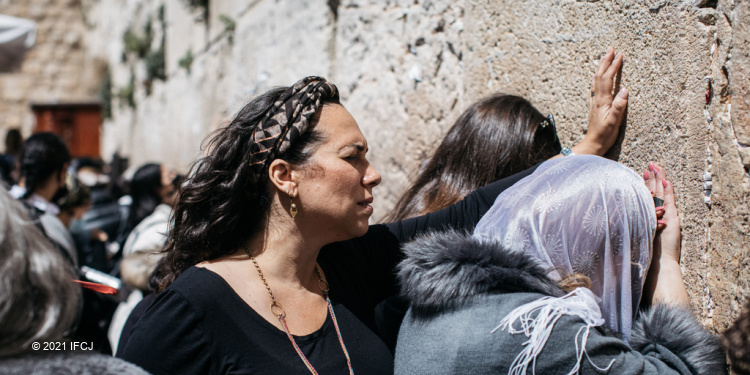The Other Side of the Western Wall
The Fellowship | June 8, 2022

To so many millions of people of faith, the Western Wall is the symbol of the Holy City of Jerusalem. It is the holiest site for Jewish people. It is often the most important spot to see for visitors to the Holy Land. And it is where The Fellowship takes your prayers. But many still often wonder, just what is the Western Wall, and what’s on the other side of it?
The Western Wall is part of a large wall that once surrounded the Temple Mount complex. It is the closest the Jewish people can easily get to the Temple Mount today. And the Western Wall was as close as Jews could get to the Temple Mount for thousands of years.
At the Western Wall, Jews can pray freely and celebrate important occasions like bar mitzvahs and weddings. But the Western Wall is not the Temple Mount, the place where the Temples once stood and God’s presence once dwelled in a palpable form. The Temple Mount is the place that King David purchased, and it is the ground on which King Solomon built a sanctuary for God so that He might dwell among His people.
The Temple Mount is the most sacred place in the world for the Jewish people.
In 1967, in what many consider the single greatest open miracle since biblical times, Israel was forced into a war that it neither wanted nor thought could be won – at least not without extremely heavy casualties. But miraculously, Israel did win the Six-Day War, and in doing so, liberated Jerusalem, which had been occupied by Jordan for the previous 19 years. The most amazing moments of that war were caught on radio. Commander Motta Gur reached the Temple Mount and spoke those famous words that echoed around the world: “The Temple Mount is in our hands! I repeat: The Temple Mount is in our hands!”
For the first time in two millennia, Jewish sovereignty had been asserted over Judaism’s holiest site.
And then perhaps one of the greatest mistakes in Israel’s modern history was made. General Moshe Dayan, with the best of intentions and wanting to be kind to our neighbors and maintain freedom of worship for all people, allowed the Palestinians to maintain a degree of control over the Temple Mount. They have full freedom and rights to the Al-Aqsa Mosque and the Dome of the Rock, which sit directly over the remains of the First and Second Temples. Essentially, they control the Temple Mount. Meanwhile, while Israel still retains rights to this area, current law does not permit any non-Muslims to pray on the Temple Mount. That means that if a Jew is lucky enough to obtain permission to ascend the Mount, he or she may not worship our God in any way at our holiest site. Muttering just one prayer can result in arrest by police.
So, the fact is – a fact many wish to forget – the Temple Mount is not really in our hands.
If it were, there would be true freedom for all to worship there. Perhaps there would be a Third Temple on the site, the Temple which God calls a “house of prayer for all nations” (Isaiah 56:7).
My point is that while we wholeheartedly celebrate the miracle of a reunited Jerusalem and give gratitude to God for bringing it about, we cannot forget that our work – and His work – is not done. We cannot forget the Temple Mount – the place where God once dwelled and is destined to dwell again. We must continue to pray, and never give up on our ultimate goal. We are so close – just on the other side of the wall.
